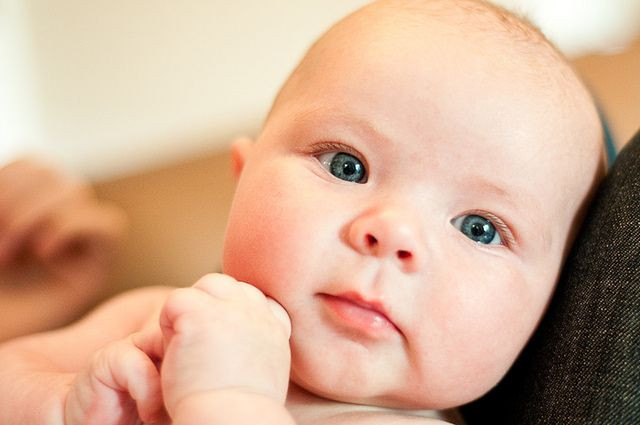Infant Vision: Babies' Eye Color Change Determined By Melanin Levels, Genetics

A majority of people in the U.S. are born with “baby blues,” but only one in five Caucasian adults have blue eyes. The irises change color from blue to green, hazel, or brown during infancy, but why? In Mental Floss’s latest video, “Why do babies’ eyes change color?,” host Craig Benzine explains changes in eye color after birth are not only based on genetics, but also on melanin levels in the eyes.
Newborns are not born with the levels of melanin that they'll eventually have. The change in eye color usually happens around six months, but eyes can change color up to about 3 years old. This increases over time, which is why often eyes that start out blue may change to another color.
The eyes contain melanocytes, which are cells that produce melanin — a type of pigment that can also affect the color of your skin and hair — in the eyes. A small deposit of melanin in the irises, muscular rings around the pupils, makes them appear blue, while a medium amount makes them green or hazel, and a lot of it makes the irises brown.
A good way to tell if a baby's eye will change is by looking at the eye from the side, so there's no light affecting your view. If there are hints of gold in the iris, the eyes will probably become brown or green over time. If the eyes are still very blue, they'll probably stay that way. However, this needs to be properly studied.
Eye color is also linked to genetics, but it is more complicated than once thought. This is a polygenic trait, meaning it is determined by multiple genes. Experts have predicted there are about 15 of them, while melanin production is just a little piece of that puzzle.



























